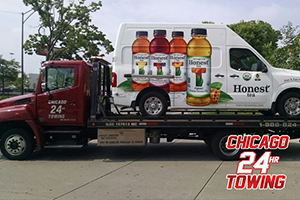Heavy duty hauling requires a great degree of professional knowledge and skill. That’s why it’s always best to leave heavy duty hauling to teams of towing experts, like those at Towing Chicago. Our technicians have the necessary experience to perform any type of heavy duty hauling operation with the utmost professionalism, skill, and efficiency. Here’s a guide to heavy duty hauling as prepared by the towing experts at Towing Chicago.
Potential Risks of Amateur Heavy Duty Hauling
There’s a huge range of towing violations that can risk massive damages to vehicles, payloads, and even loss of life. These include using securement equipment that’s been damaged, shifting and moving cargo, using the wrong kind of equipment to tie cargo down, and not securing the front and back of the vehicle. All of these violations can potentially cause financial, property, or physical damages.
Ensuring that the Proper Towing Equipment is being Used
Haulers need to secure all equipment before embarking on the towing operation. This prevents the extreme damages that can be caused by the incredible weight of the load carried when it shifts during turns or quick stops with extreme momentum.
- Ensure that you have all the right equipment for the towing operation. This includes the type of equipment being used and it’s proper configuration, as well as ensuring it’s the proper weight and size dimensions. Make sure that you’re using a vehicle with the proper gross weight rating.
- Make sure that you have all oversized permits if they are necessary to move this equipment.
- Make sure that all necessary special equipment and tie-down materials are intact, without any damage, before starting the heavy duty hauling operation.
Securing Equipment
- Ensure that chains are used to tie down any heavy equipment.
- Limit shifting and motion by placing the load in the proper area.
- Don’t allow any of the hauling equipment to make contact with the towing vehicle’s hydraulic lines or brakes.
- Make sure to pad the edges of the towing bed in order to prevent damage to tie downs during the towing operation.
- If the load has wheels on it, use wedges or chocks to block the wheels from turning.
- Look at the security level of the tie downs, and ensure they are securing the load properly before starting to drive. It’s always a good idea to slowly brake to a parking spot during the drive to recheck all tie downs during the trip to make sure that nothing is slipping.

